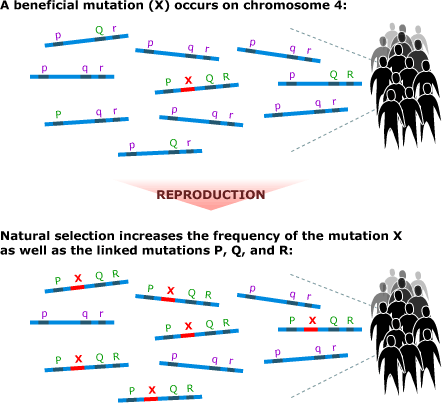Now that Emilia and her colleagues have identified the portion of EPAS1 that differs between Tibetans and Han (a large chunk of one intron), they need to figure out which nucleotides within this region are responsible for the change in how the gene functions. This problem is challenging because natural selection cannot extract a beneficial mutation from its chromosomal context. When a mutation is strongly favored by natural selection, it increases in frequency rapidly and may bring nearby neutral mutations along for the ride. The more quickly the mutation spreads, the fewer chances recombination has to break up any association between the beneficial mutation and nearby variations that have no benefit at all. The result is that a strongly favored mutation is likely to be surrounded by many other mutations at similarly high frequency, as shown in the diagram below. Figuring out which of these mutations was the real target of selection can be tricky — and that’s one of the tasks that Emilia is working on now. “Even though we are beginning to identify the genetic basis of altitude adaptation, it’s going to take a lot more research before we really understand,” she says.

